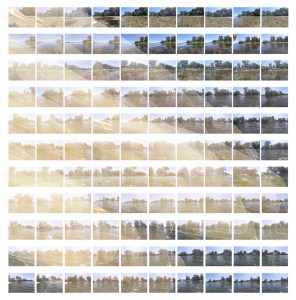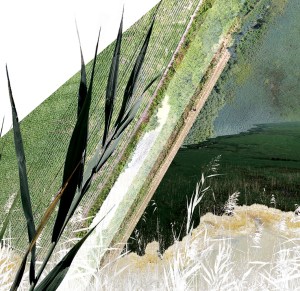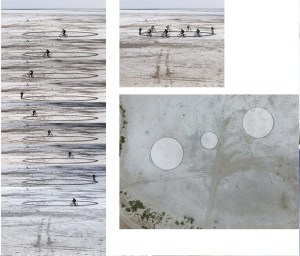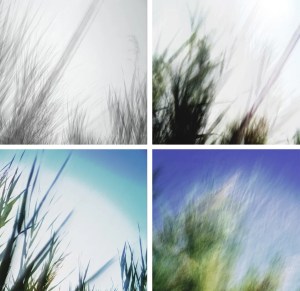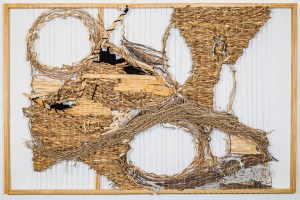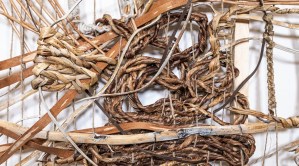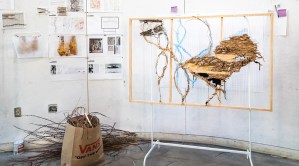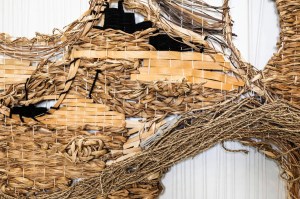
The 2025 Rome Prize in landscape architecture was awarded to Sean Burkholder, Karen Lutsky, and Tameka Baba, who will incorporate unconventional methods to explore a variety of spaces.
By Timothy A. Schuler
This year’s Rome Prize recipients in landscape architecture share an affinity for unconventional methods. Sean Burkholder, ASLA, and Karen Lutsky’s Timescapes of Lake Bracciano project represents an extension of the gonzo approach to landscape interpretation the pair first explored in “Curious Methods” (published in Places Journal) and later in their 2022 book Five Bay Landscapes: Curious Explorations of the Great Lakes Basin. Tameka Baba’s Urban Tapestry: Exploring Soft Density in Rome’s Public Spaces project will continue her interest in weaving as both an artistic practice and a metaphor for shaping space.
Click on each image to view. Lutsky and Burkholder’s project will incorporate approaches they previously explored in the Great Lakes. Photos by Karen Lutsky and Sean Burkholder, ASLA.
While in residence at the American Academy in Rome’s Villa Aurelia, Baba will focus on the Piazza del Popolo, continuing her practice of using salvaged materials from deconstructed woven baskets and exploring how the rich cultural residues of this exchange might inform more diverse, pluralistic public spaces in the city. Inspired by the historical flow of people, goods, and materials in and through Rome, as well as the layered nature of Roman gardens, weaving becomes a method of inquiry. “Looking at the singular elements [of a basket], whether it’s a straw-like material or hemp that’s been twisted into rope, we can start to assign meaning to them, similar to the way that we begin to think about vacant landscapes,” Baba says.
Click on each image to view. Tameka Baba will continue her interest in using salvaged materials from deconstructed woven baskets to inform more diverse and pluralistic public spaces. Photos by Philip Arnold.
Burkholder and Lutsky plan to work outside the city, investigating the geologic, littoral, and cultural landscape of Lake Bracciano, a volcanic body of water that for a time supplied water to Rome and still operates as an emergency reservoir. Weaving will play a part in their project as well, though not as literally. “This place is old as hell,” Burkholder says. “There’s geologic and volcanic timescales, there’s this weird Etruscan-Roman mess that came to a head there—the timescales are so much more vast than what we have in the United States.” The idea is to “unpack those things, layer them together, talk about their relationships, and maybe even speculate on what might have happened had other things occurred,” Burkholder says, using everything from drone photography to the visual style of Italian comics to do so.
The trio joins an esteemed roster of landscape practitioners who have received the prize, which has been awarded by the American Academy in Rome for more than 130 years. The prize is accompanied by a stipend and a six-month to two-year fellowship in Rome. Baba, an assistant professor of landscape architecture at the Ohio State University, will spend the full 2025–2026 academic year in Rome; Burkholder and Lutsky, of the University of Pennsylvania and the University of Minnesota, respectively, will join for the spring 2026 term.
For Burkholder and Lutsky, the multidisciplinary nature of the fellowship itself was a significant draw. “The [idea of] multiple perspectives is something that we love bringing into our work,” Lutsky says. “And so the collective aspect, the idea that they are putting people together thoughtfully and that part of the goal is that you talk to each other and build a cohort, is unique.”
Timothy A. Schuler is a contributing editor to the magazine.
The post “Gonzo” design and deconstructed baskets: This year’s Rome Prize Winners first appeared on Landscape Architecture Magazine.
